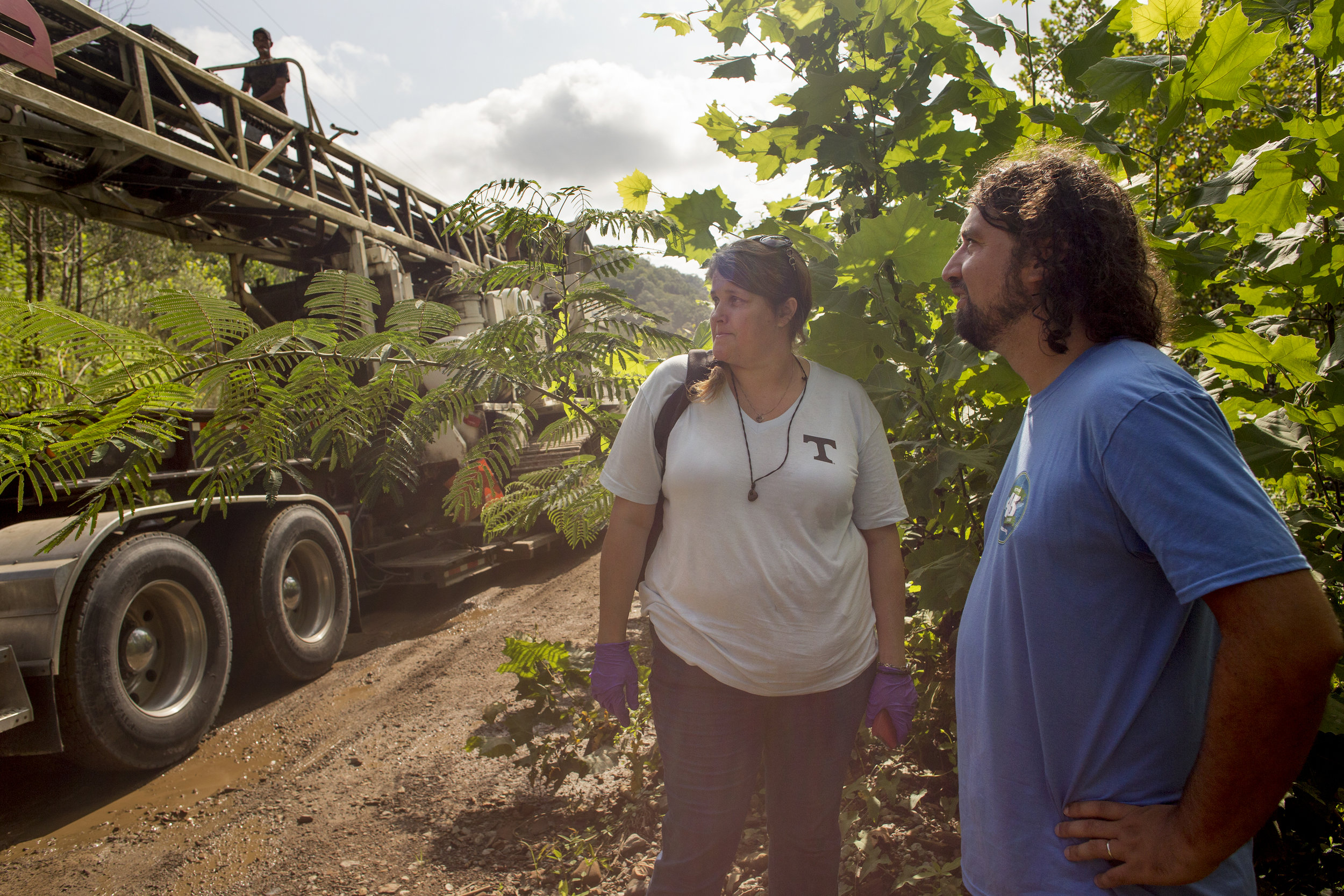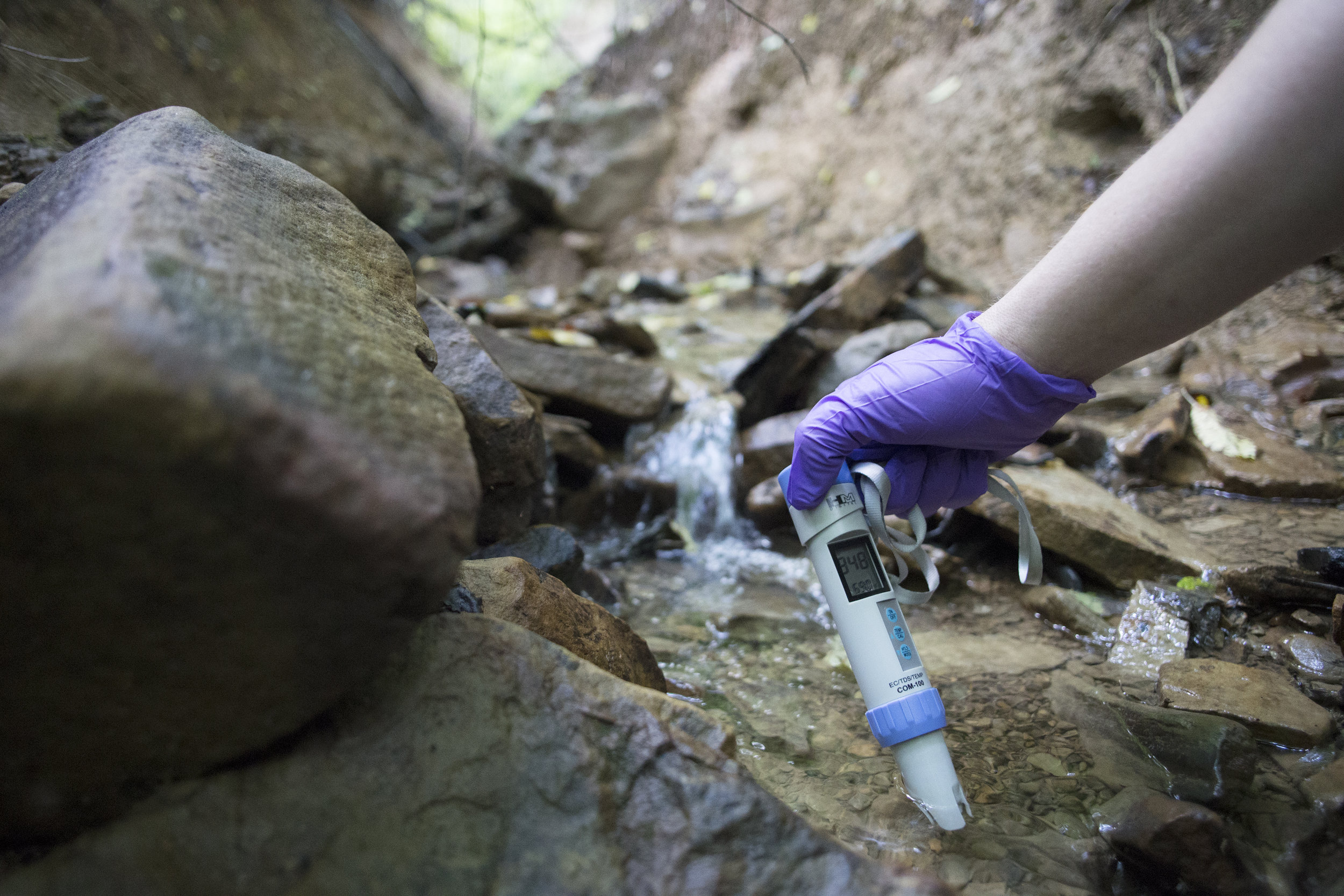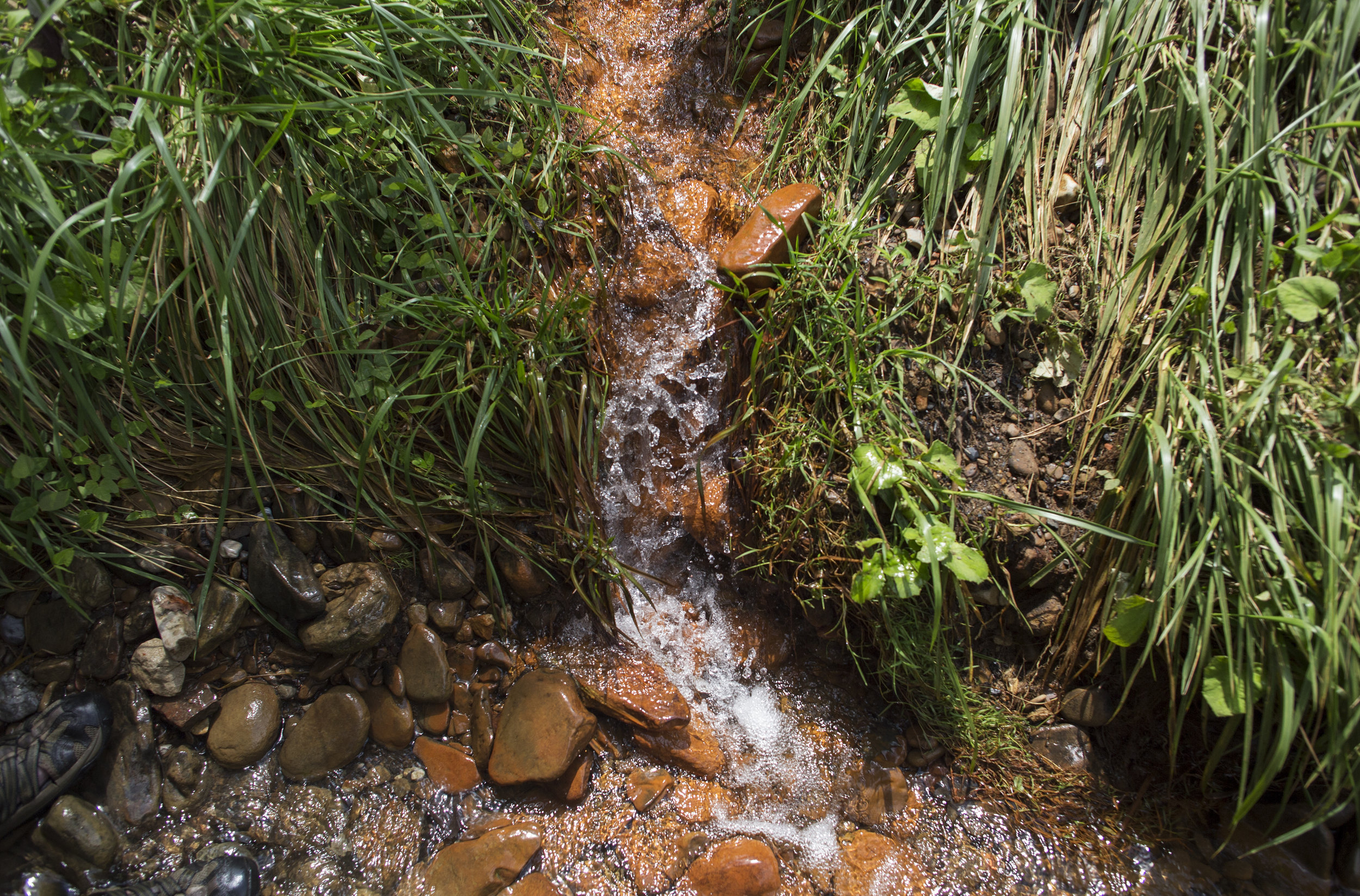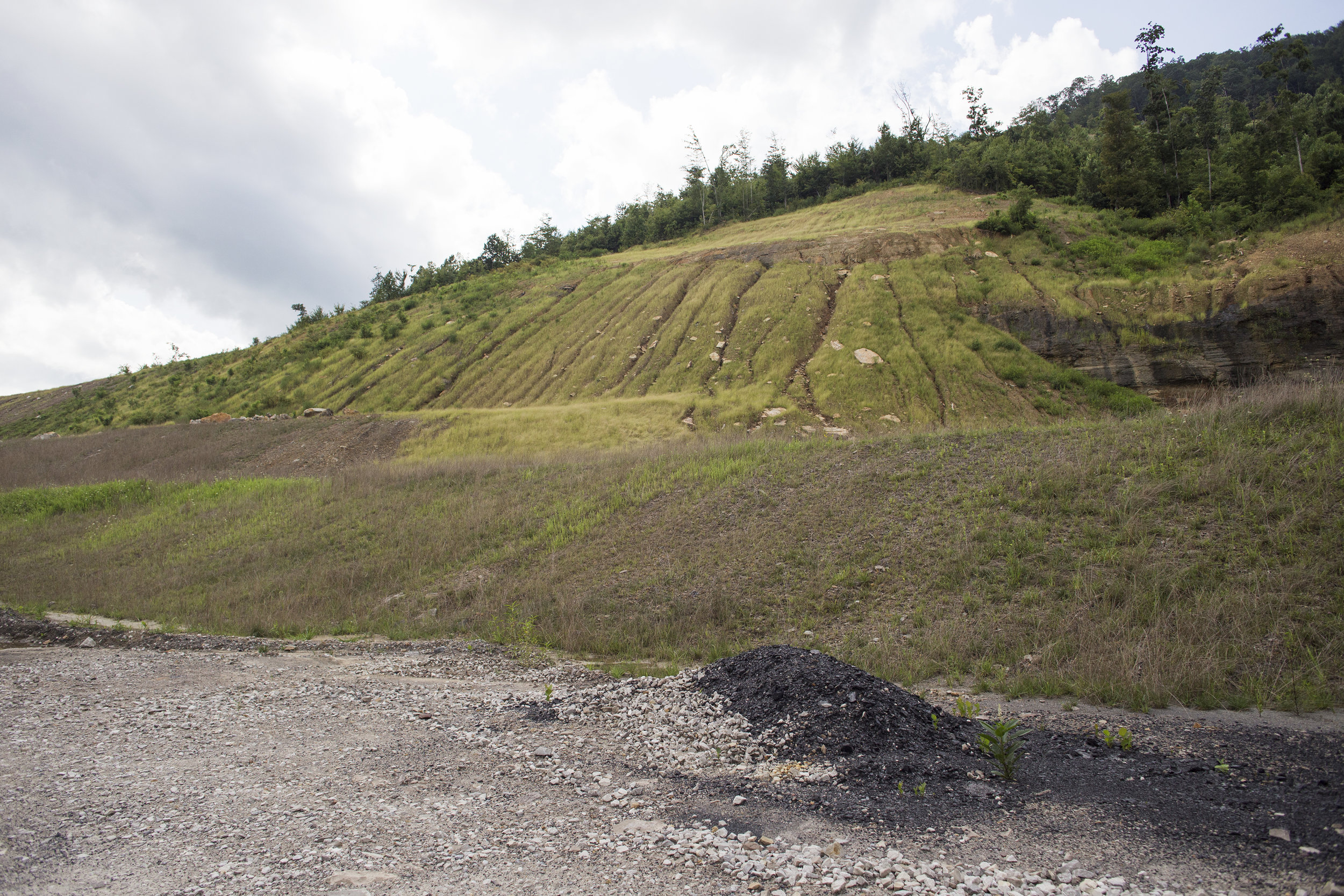
Clearfork Citizen's Water Monitoring Project coordinator April Jarocki (left) and Matt Hepler pause their water sampling to let a mine-blasting truck pass in Eagan, Tenn. Wednesday, August 16, 2017.

Matt Hepler walks through a cemetery in order to access a creek to measure the conductivity, total dissolved solids, and pH near a surface mine in Eagan, Tenn. Hepler, Central Appalachian Environmental Scientist and member of Appalachian Voices board of directors, has seen how soils and minerals displaced by explosives via surface mining settle across the landscape, burying or polluting springs and streams.

Water-quality levels in streams near central Appalachian coalfields are “acutely lethal” to macroinvertebrates, fish, and birds, according to a 2011 EPA study. However, the effects of these levels to humans are largely unknown.

Water run-off from Valley Creek discolors the rocks beneath due to heavy metal contamination near the Elk Pole test site in Eagan, Tenn. Wednesday, August 16, 2017.

Matt Hepler, left, April Jarocki and Darrell James Coker stand before a mountaintop removal site in Eagan, Tenn. Wednesday, August 16, 2017. Jarocki and Coker are volunteers, trained by Hepler, for the Clearfork Community Institute as part of the Appalachian Citizen Enforcement Project launched by the Alliance for Appalachia. The ACE trains members of Appalachian communities to collect data in an attempt to hold mining companies accountable for the contamination they cause in local waterways.

A Strata Mining surface mine in Eagan, Tenn., August 16, 2017.






Clearfork Citizen's Water Monitoring Project coordinator April Jarocki (left) and Matt Hepler pause their water sampling to let a mine-blasting truck pass in Eagan, Tenn. Wednesday, August 16, 2017.
Matt Hepler walks through a cemetery in order to access a creek to measure the conductivity, total dissolved solids, and pH near a surface mine in Eagan, Tenn. Hepler, Central Appalachian Environmental Scientist and member of Appalachian Voices board of directors, has seen how soils and minerals displaced by explosives via surface mining settle across the landscape, burying or polluting springs and streams.
Water-quality levels in streams near central Appalachian coalfields are “acutely lethal” to macroinvertebrates, fish, and birds, according to a 2011 EPA study. However, the effects of these levels to humans are largely unknown.
Water run-off from Valley Creek discolors the rocks beneath due to heavy metal contamination near the Elk Pole test site in Eagan, Tenn. Wednesday, August 16, 2017.
Matt Hepler, left, April Jarocki and Darrell James Coker stand before a mountaintop removal site in Eagan, Tenn. Wednesday, August 16, 2017. Jarocki and Coker are volunteers, trained by Hepler, for the Clearfork Community Institute as part of the Appalachian Citizen Enforcement Project launched by the Alliance for Appalachia. The ACE trains members of Appalachian communities to collect data in an attempt to hold mining companies accountable for the contamination they cause in local waterways.
A Strata Mining surface mine in Eagan, Tenn., August 16, 2017.